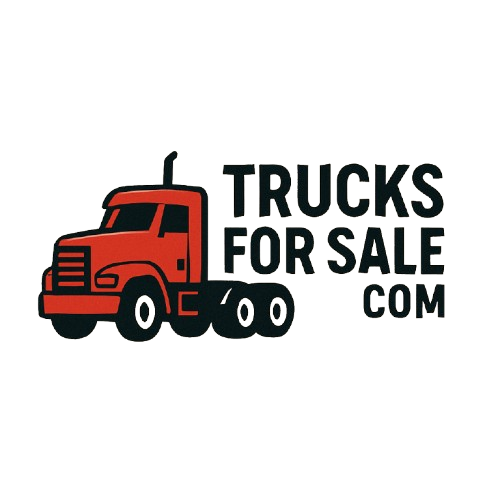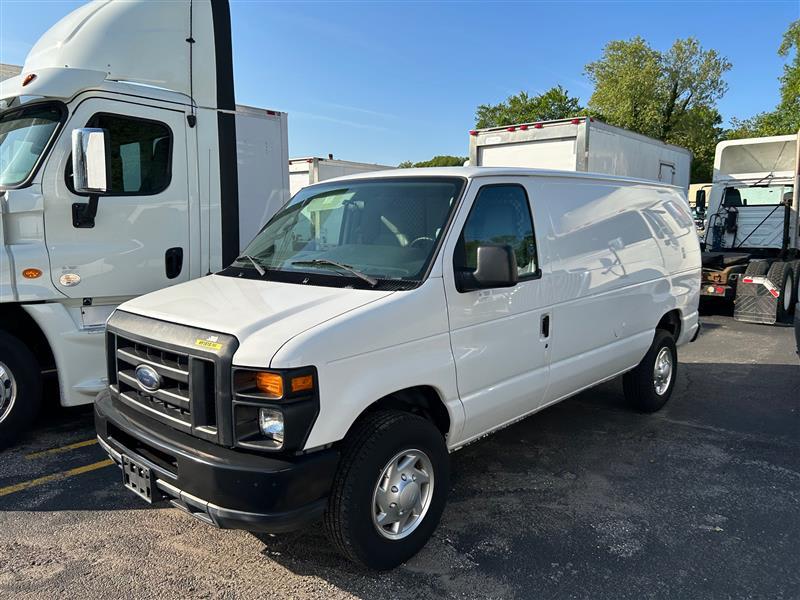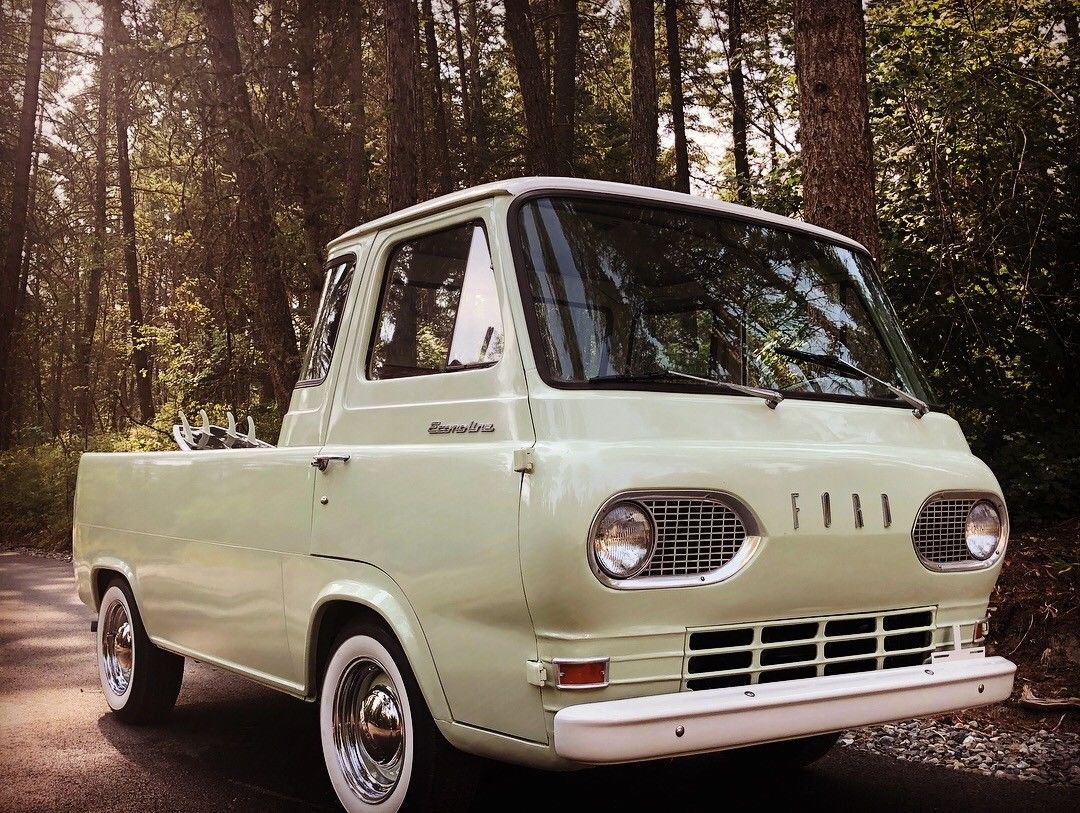Econoline Trucks for Sale: Your Comprehensive Guide to Finding the Perfect Workhorse or Adventure Van
For decades, the Ford Econoline series has been an undeniable staple on American roads, serving a remarkable array of purposes from the backbone of small businesses to the adventurous spirit of cross-country travelers. While technically a full-size van, the term "Econoline trucks for sale" often encompasses not just the original van body styles, but also the versatile cutaway chassis that forms the basis for everything from box trucks and utility vehicles to RVs and ambulances. Renowned for their rugged durability, ample cargo space, and a reputation for reliability, Econolines offer an incredibly practical and often affordable solution for those seeking a heavy-duty vehicle.
This comprehensive guide will delve into everything you need to know about finding and purchasing an Econoline, helping you navigate the market and secure a vehicle that perfectly fits your needs, whether for work, recreation, or a blend of both.
A Legacy of Utility: The Evolution of the Ford Econoline
To truly appreciate the "Econoline trucks for sale" market, it’s helpful to understand the vehicle’s storied history. First introduced in 1961 as a compact, forward-control van, the Econoline quickly carved out its niche. Over its five decades of production (ending in 2014, when it was largely replaced by the Ford Transit), it underwent several significant transformations, adapting to changing demands and technologies:
- First Generation (1961-1967): The original compact van, also offered as a pickup truck and passenger wagon. These are now sought-after classics.
- Second Generation (1968-1974): Grew in size, moving to a more conventional long-nose design, improving safety and engine access.
- Third Generation (1975-1991): A highly popular and long-lived generation, known for its robust construction and wide array of configurations, including the ubiquitous E-Series commercial van.
- Fourth Generation (1992-2014): The most common generation you’ll find for sale today. While receiving several facelifts and powertrain updates over the years, its core design remained largely consistent, emphasizing durability and utility. This generation offered various lengths, roof heights (later models), and powerful V8 and V10 engines.
The enduring legacy of the Econoline means there’s a vast secondary market, offering a diverse range of models from different eras, each with its unique characteristics.
Why Choose an Econoline "Truck"? Benefits and Versatile Uses
The appeal of an Econoline, whether a cargo van, passenger van, or a cutaway chassis, lies in its unparalleled versatility and robust construction. Here’s why they remain a top choice for many buyers:
- Unmatched Versatility:
- Workhorse: Ideal for plumbers, electricians, delivery services, contractors, mobile workshops, and food trucks.
- People Mover: Perfect for shuttles, church groups, large families, or sports teams (passenger van configurations).
- Adventure Vehicle: A popular base for DIY camper van conversions, RVs, and off-grid living setups due to their spacious interiors and relatively simple mechanics.
- Specialty Applications: Often converted into ambulances, police vehicles, accessible transport, and more due to the strength of their cutaway chassis.
- Durability and Reliability: Econolines are famous for their sturdy body-on-frame construction and robust powertrains, particularly the venerable Ford V8 engines (5.4L, 4.6L, 7.3L diesel, 6.0L diesel) and the mighty 6.8L V10. These engines, when properly maintained, are known to rack up hundreds of thousands of miles.
- Affordability: Compared to newer vans or trucks, used Econolines offer excellent value. Their widespread availability often translates into competitive pricing.
- Parts Availability and Ease of Maintenance: Being a Ford product with such a long production run, parts are readily available and often affordable. Many repairs can be performed by a competent DIY mechanic, further reducing ownership costs.
- Customization Potential: The large, boxy interior of the cargo van is a blank canvas for customization, making it a favorite for van life enthusiasts and businesses needing bespoke interior setups.
Types of Econoline "Trucks" You’ll Find for Sale
When searching for "Econoline trucks for sale," you’ll encounter several common configurations:
- Cargo Vans (E-150, E-250, E-350): The most common type, these are essentially a large box on wheels, perfect for hauling goods, tools, or building out custom interiors. The E-150 (later E-250) is lighter duty, while the E-350 (or E-450) offers increased payload and towing capacity.
- Passenger Vans: Equipped with seating for 8, 12, or even 15 passengers, these are ideal for group transport. Seats are often removable, offering flexibility for cargo when needed.
- Cutaway Chassis (E-350, E-450, E-550): These are essentially the front cab and chassis, designed for custom bodies to be attached. This is where the "truck" aspect truly shines, as they form the foundation for:
- Box Trucks: Common for moving companies, delivery services, and general hauling.
- Utility/Service Trucks: Equipped with external compartments and often a ladder rack.
- RV Conversions: Many Class C motorhomes are built on the Econoline cutaway chassis.
- Specialty Vehicles: Ambulances, limousines, and shuttle buses.
- Early Econoline Pickups: The rarest and most collectible type, these were true pickup trucks produced in the 1960s. If you see one, it’s likely a classic enthusiast’s dream.
Key Considerations When Buying an Econoline
Purchasing a used Econoline requires careful consideration to ensure you get a reliable vehicle that meets your expectations.
- Intended Use: This is paramount. A light-duty E-150 is fine for occasional personal use, but a contractor needing to haul heavy equipment will require an E-350 or E-450 with a robust powertrain and proper gross vehicle weight rating (GVWR). For towing, look for a factory tow package and consider the 7.3L Power Stroke diesel (if available for the year) or the 6.8L V10.
- Condition, Condition, Condition:
- Rust: Inspect the frame, rocker panels, wheel wells, and door bottoms thoroughly. Rust can be a significant issue, especially in colder climates where roads are salted.
- Engine & Transmission: Listen for unusual noises, check for fluid leaks, and observe shifting patterns during a test drive. These are generally robust, but high mileage means wear.
- Suspension & Brakes: Test drive on various surfaces. Pay attention to steering feel, braking effectiveness, and any clunking noises.
- Tires: Check tread depth and tire age. New tires can be a significant expense.
- Mileage vs. Maintenance: Econolines often have high mileage, but a well-maintained high-mileage vehicle is often a better buy than a lower-mileage one that’s been neglected. Always ask for maintenance records.
- Previous Ownership and Use: A van used for heavy commercial hauling will likely show more wear than one used for light personal transport. Fleet vehicles often have detailed maintenance records but might have been driven hard.
- Pre-Purchase Inspection (PPI): This is non-negotiable. Have a trusted mechanic inspect the vehicle before you buy. They can identify hidden problems that might save you thousands down the line.
- Title and Vehicle History Report: Always get a CarFax or AutoCheck report. Look for accidents, salvage titles, flood damage, or multiple owners in a short period. Ensure the title is clear and transferable.
Where to Find Econoline Trucks for Sale
The market for used Econolines is robust. Here are the best places to look:
- Online Marketplaces: Craigslist, Facebook Marketplace, eBay Motors, and local classifieds are goldmines for private sellers. You’ll find a wide range of conditions and prices here.
- Used Car Dealerships: Many dealerships, especially those specializing in commercial vehicles, will have Econolines in stock. They often offer financing and some level of warranty, though prices may be higher.
- Commercial/Fleet Auctions: Government, utility company, and commercial fleet auctions are excellent sources for well-maintained (though often high-mileage) Econolines. Be prepared to buy sight-unseen to some extent and understand auction rules.
- Specialty Forums and Groups: Van life communities, work truck forums, and specific Ford Econoline enthusiast groups online often have classified sections where members sell their vehicles. These can be great places to find well-cared-for examples or customized builds.
Tips for a Successful Purchase
- Set a Realistic Budget: Factor in not just the purchase price, but also insurance, registration, and initial maintenance or repair costs.
- Research Specific Years/Models: Understand the differences between engine options, lengths, and features for the years you’re considering.
- Be Patient: The perfect Econoline might not appear overnight. Don’t rush into a purchase.
- Ask Questions: Don’t hesitate to ask the seller about the vehicle’s history, maintenance, and any known issues.
- Test Drive Thoroughly: Drive at various speeds, on different road types, and test all features (AC, lights, radio, power windows, etc.).
- Negotiate: Most used vehicle prices are negotiable. Be prepared to make a reasonable offer based on your research and the vehicle’s condition.
Potential Challenges and Solutions
While Econolines are durable, buying an older, used vehicle always comes with potential challenges:
- High Mileage and Wear:
- Challenge: Most Econolines for sale will have significant mileage, leading to worn components.
- Solution: Prioritize vehicles with detailed maintenance records. Budget for immediate replacement of wear items (brakes, tires, belts, fluids) and potential future repairs. A thorough PPI is crucial.
- Rust:
- Challenge: Common in regions with road salt. Can compromise structural integrity.
- Solution: Inspect meticulously. Minor surface rust is manageable, but extensive frame or structural rust should be a deal-breaker unless you’re prepared for costly fabrication work.
- Fuel Economy:
- Challenge: Econolines are not known for their fuel efficiency, especially the V8 and V10 models.
- Solution: Understand that this is part of owning a heavy-duty vehicle. Factor fuel costs into your overall budget. Diesel models offer better economy but have higher maintenance costs.
- Finding Specific Configurations:
- Challenge: Locating a very specific year, engine, or interior configuration can be time-consuming.
- Solution: Expand your search radius, utilize online search filters, and be patient. Sometimes, buying a standard model and customizing it yourself is more practical.
Econoline Trucks for Sale: Estimated Price Ranges
Prices for used Econolines vary wildly based on year, mileage, condition, engine type, and specific configuration (cargo, passenger, cutaway, etc.). The following table provides estimated ranges to give you a general idea. Always verify specific vehicle details and condition.
| Category/Generation | Condition: Fair (High Mileage, Minor Issues) | Condition: Good (Average Mileage, Well-Maintained) | Condition: Excellent (Low Mileage, Pristine) |
|---|---|---|---|
| 1st & 2nd Gen (Classic) | $2,000 – $7,000 | $7,000 – $15,000 | $15,000 – $30,000+ (Collector) |
| 3rd Gen (1975-1991) | $1,500 – $4,000 | $4,000 – $8,000 | $8,000 – $15,000 |
| 4th Gen Cargo Van (E-150/250) | $2,000 – $6,000 | $6,000 – $12,000 | $12,000 – $20,000 |
| 4th Gen Heavy Duty Cargo (E-350/450) | $3,000 – $8,000 | $8,000 – $18,000 | $18,000 – $28,000 |
| 4th Gen Passenger Van | $2,500 – $7,000 | $7,000 – $15,000 | $15,000 – $25,000 |
| Cutaway Chassis (Box/RV Base) | $4,000 – $10,000 | $10,000 – $25,000 | $25,000 – $40,000+ |
| Diesel (7.3L Power Stroke) | Add $1,000 – $5,000 | Add $2,000 – $8,000 | Add $3,000 – $10,000 |
Note: These prices are estimates and can fluctuate significantly based on local market demand, specific features (e.g., high top, AWD conversions), and the urgency of the sale.
Frequently Asked Questions (FAQ) about Econoline Trucks for Sale
Q1: Are Econoline vans reliable?
A1: Yes, generally. Econolines are known for their robust build quality, especially their powertrains (Ford V8s and V10s). With proper maintenance, they can last for hundreds of thousands of miles. Common issues, like rust or suspension wear, are typical for high-mileage vehicles.
Q2: What’s the best year for an Econoline?
A2: The "best" year depends on your needs. For modern amenities and safety features, late 4th generation models (2000s-2014) are good. For sheer durability and parts availability, the 7.3L Power Stroke diesel models (late 90s to early 2000s) are highly regarded, though they are older. If you’re looking for a classic, the 1st and 2nd generations are sought after.
Q3: What kind of fuel economy can I expect from an Econoline?
A3: Econolines are heavy vehicles with powerful engines, so fuel economy is not their strong suit. Expect anywhere from 10-15 MPG for gasoline V8s/V10s, depending on load, driving style, and configuration. Diesel models (7.3L, 6.0L) typically offer slightly better mileage, often in the 14-18 MPG range.
Q4: Can I convert an Econoline into a camper van?
A4: Absolutely! Econolines are one of the most popular platforms for DIY camper van conversions due to their spacious, boxy interiors, robust chassis, and affordability. There’s a huge community and many resources available for such projects.
Q5: What are the most common problems to look out for?
A5: Common issues include rust (especially on rocker panels, wheel wells, and frames), front suspension components (ball joints, tie rods), exhaust manifold leaks (V8s), and occasional transmission issues on very high-mileage units. Diesel engines (especially the 6.0L Power Stroke) have specific known issues that should be researched.
Q6: Are parts hard to find for Econolines?
A6: No, quite the opposite. Due to their long production run and widespread use, parts for Econolines are readily available at auto parts stores, dealerships, and online, often at reasonable prices. This makes them relatively inexpensive to maintain.
Q7: What’s the difference between an Econoline and a Ford Transit?
A7: The Ford Transit replaced the Econoline (E-Series van) for the general market in North America starting in 2014. The Transit is a more modern, globally designed van with unibody construction (mostly), better fuel economy, and more advanced features. The Econoline (E-Series) continues to be sold in cutaway and stripped chassis forms for commercial upfitting, but the traditional van body ceased production.
Conclusion
The search for "Econoline trucks for sale" opens the door to a world of versatile, durable, and often affordable vehicles. Whether you need a reliable work van to haul tools, a spacious passenger vehicle for group transport, or a blank canvas for your next adventure build, the Ford Econoline series offers a compelling solution. By understanding its history, considering your specific needs, conducting thorough inspections, and leveraging the tips outlined in this guide, you can confidently navigate the market and find an Econoline that serves you well for years to come. With a little research and patience, your ideal workhorse or adventure companion is out there waiting.
 Trucks for Sale Find the best deals on used trucks for sale across the USA. Browse pickups, semi trucks, dump trucks and more – updated daily
Trucks for Sale Find the best deals on used trucks for sale across the USA. Browse pickups, semi trucks, dump trucks and more – updated daily

